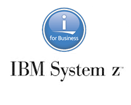


Learn how to plan for, implement, and manage the ongoing operations of an IBM i. Emphasis is on Security , system availability, backup and recovery, system software management, and problem determination. Also, get an introduction to the architecture and terminology of the IBM i.
This is an intermediate course intended for IBM i system administrators, data processing managers and other individuals who implement and manage Security , backup and recovery, system software and problem determination. This course is not recommended for system operators.
This introductory course enables a new system operator to develop basic to intermediate level skills needed for day-to-day operations of the Power System with IBM i. Focus is given to using the GUI (IBM i Access Client Solutions and IBM Navigator for i) as well as 5250 emulation sessions to perform tasks including job control, monitoring, sending messages, managing systems devices, and more. Hands-on exercises reinforce the lecture topics and prepare the student to successfully operate a Power System with IBM i.
It is not intended for technical audiences who are seeking an in-depth look at how the Power System with IBM i works. This audience should instead attend the IBM i Technical Introduction (OL4AG).
In this classroom course, you will learn basic concepts and skills you need to be productive users on Power Systems with IBM i. With plenty of hands-on lab exercises, we show everything from signing onto the available user interfaces; green screen environment and IBM Navigator for i.
You will learn how objects are managed on the system and how you display these objects. You will learn to use control language (CL) commands (fast path) and how to work with and manage messages on the system. Students will also learn how to the system manages work and how you manage your printouts. Lastly, students will also get a basic overview of Security .
This course is designed to enhance the skills of an IBM i System Operator. This course explains the concept of how LPAR works and discusses the functions provided by the HMC. We will discuss the IBM i Access Family of products in general and Access Client Solutions, specifically. We will discuss the different types of Security that you can implement in order to control who has access to your data and what they can do with that data if they are allowed to access. We will discuss Security control via system values, user and group profiles, authorization lists, and adopted authority. This course will help you develop additional skills in the areas of work management and how to create a basic CL program. In the area of CL programming, we discuss concepts of programming, then how to create a basic CL program using the traditional application development tools PDM and SEU. Then, you will learn how to use the GUI tools in RDP (RSE and LPEX). You will also learn the steps to create a menu using SDA. You will learn some tips that you can use to help improve your IBM i operations. We will also discuss how you can use Management Central as a tool to manage a single system or a network of TCP/IP connected Power Systems with IBM i.
Popular courses are  IBM i System Administration OL19G
If you need training for 3 or more people, you should ask us about onsite training. Putting aside the obvious location benefit, content can be customised to better meet your business objectives and more can be covered than in a public classroom. It's a cost effective option. One on one training can be delivered too, at reasonable rates.
Submit an enquiry from any page on this site, and let us know you are interested in the requirements box, or simply mention it when we contact you.
All $ prices are in USD unless it’s a NZ or AU date
SPVC = Self Paced Virtual Class
LVC = Live Virtual Class
Our clients have included prestigious national organisations such as Oxford University Press, multi-national private corporations such as JP Morgan and HSBC, as well as public sector institutions such as the Department of Defence and the Department of Health.












